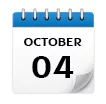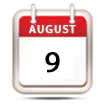14 May 2024 : Daily Answer Writing
Q1) Harnessing the potential of traditional medicine would be a game changer for health when founded on evidence, innovation, and sustainability. Comment and discuss the steps taken by the government of India in preserving the traditional knowledge of medicine.
(250 Words/15 Marks)
WHO describes traditional medicine as the sum total of indigenous knowledge, skills and practices, which different cultures have used over time to maintain health and prevent, diagnose and treat physical and mental illness. Harnessing the potential of traditional medicine would be a game changer for health as discussed:
- Holistic Approach: Traditional medicine and practices focuses on the physical, mental, emotional, and spiritual aspects of a person’s well-being.
E.g., meditation, yoga.
- Traditional medicine can complement modern healthcare.
E.g., cancer patients undergoing chemotherapy may use traditional therapies like acupuncture to manage side effects such as nausea and pain.
- Enhancing affordability and accessibility of health care benefits; checking rising out of pocket expenditure.
E.g., Central Council for Research in Ayurvedic Science (CCRAS) has initiated Tribal Health Care Research Programme (THCRP) to provide medical aid at the door steps of tribal.
- Integration of traditional and modern medicines would contribute to advancing the health system attributes related to quality, equity, sustainability and resilience as reflected in Astana Declaration 2018.
- Positive externalities:
- a) Traditional medicine relies on natural ingredients, such as herbs and other plant-based materials, thus have lesser carbon footprint.
- b) Minimal or no side-effects.
However, there are following challenges in harnessing the potential of traditional medicine:
- Lack of adequate clinical trials, leads to apprehensions towards safety and efficacy of traditional medicines. Also, they generally require a longer duration to show their effects in comparison to allopathic medicines.
- Lack of international standards (quality testing and certification) and regulatory framework, restricts the reach of traditional medicines.
- Intellectual Property and Bio-piracy: Traditional knowledge associated with traditional medicine are being exploited without consent/fair compensation.
E.g., turmeric patent filed by an American company.
- Critics argue that promoting traditional medicines may promote pseudoscience.
E.g., as per former CJI, N V Ramana, quackery is the biggest disease affecting India.
- Lack of dedicated medical infrastructure (educational institutions, medical professionals, etc. also limit the reach of traditional system of medicine.
- Resistance and skepticism towards traditional medicine.
E.g., IMA protest against ‘mixopathy’.
The government of India has taken following steps in preserving the traditional knowledge of medicine:
- Ministry of AYUSH set up with a vision of reviving the knowledge of our ancient systems of medicine and ensuring the optimal development and propagation of the AYUSH systems of healthcare.
- Regulatory bodies to standardize and regulate traditional medical practices.
E.g., Central Council of Indian Medicine (CCIM) for Ayurveda, Unani, and Siddha practices; while the Central Council of Homeopathy (CCH) for Homeopathy.
- Traditional Knowledge Digital Library (TKDL) is created as database of traditional knowledge of medicine to check bio piracy, violation of IPR and to enhance its accessibility (availability in various Indian and foreign languages).
- Preservation of Ethnic and Tribal medicinal practices along with promotion of R&D.
E.g.,
- a) National Medicinal Plants Board (NMPB) supporting R&D projects on medicinal usage of local flora by tribal people.
- b) North Eastern Institute of Folk Medicine (NEIFM) set up with objective to survey, document and validates folk medicine practices, remedies and therapies prevalent in the region.
- c) Recognition for conservation of traditional knowledge.
E.g., Padam Shri to Lakshmikutty for cataloguing/preserving the knowledge of more than 500 varieties of traditional medicine.
- Traditional medicines and practices are being integrated into national healthcare framework.
E.g., opening of AYUSH hospitals and clinics; Health and Wellness centres (Ayushman Bharat).
- International Collaboration:
- a) MoUs with more than 20 nations to promote traditional medicines.
- b) WHO Global Centre for Traditional Medicine (GCTM) to be set up in Jamnagar.
Embracing ancient wisdom of traditional medicines and modern science shall strengthen our march towards achieving SDG 3 and One Health framework.




